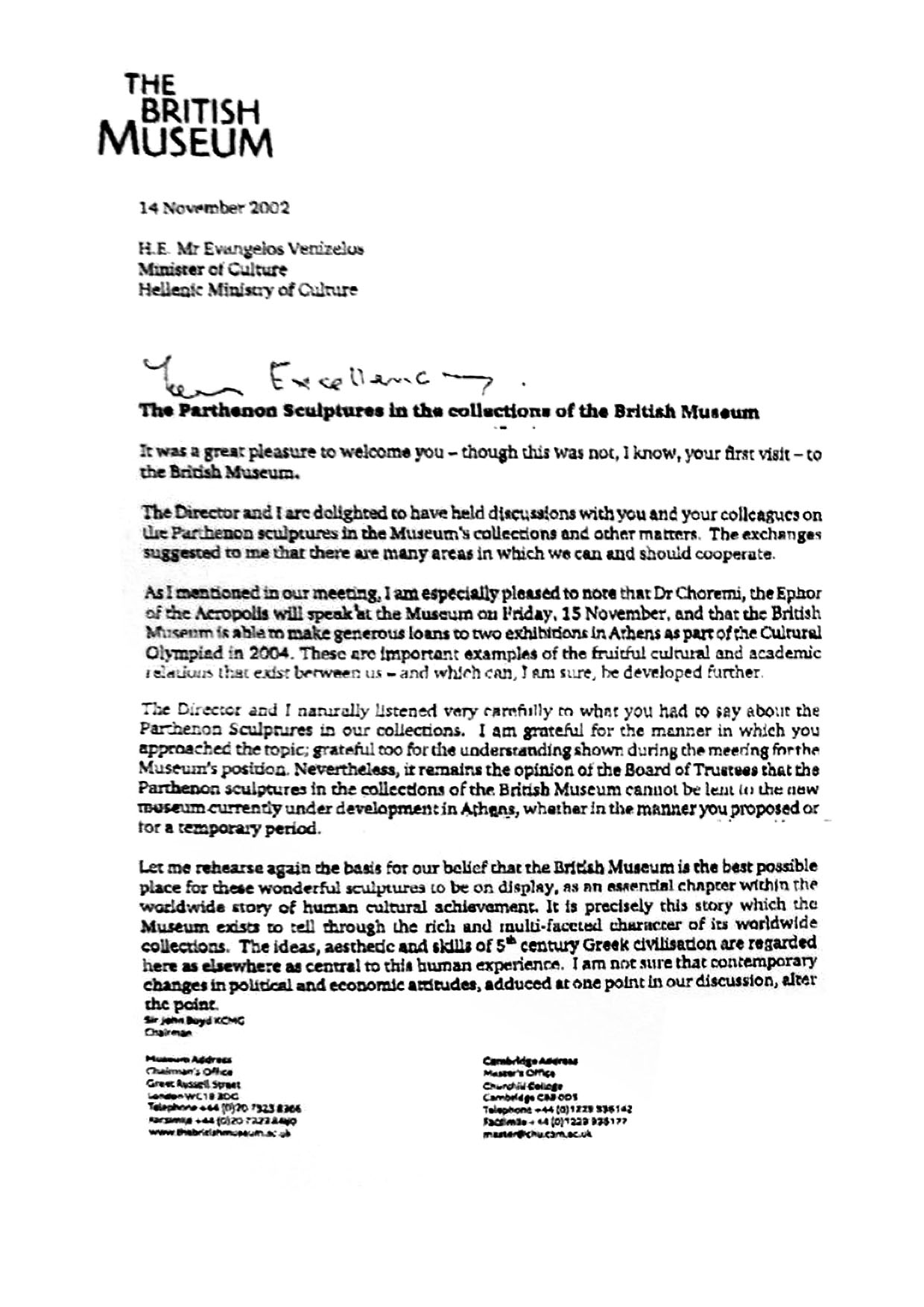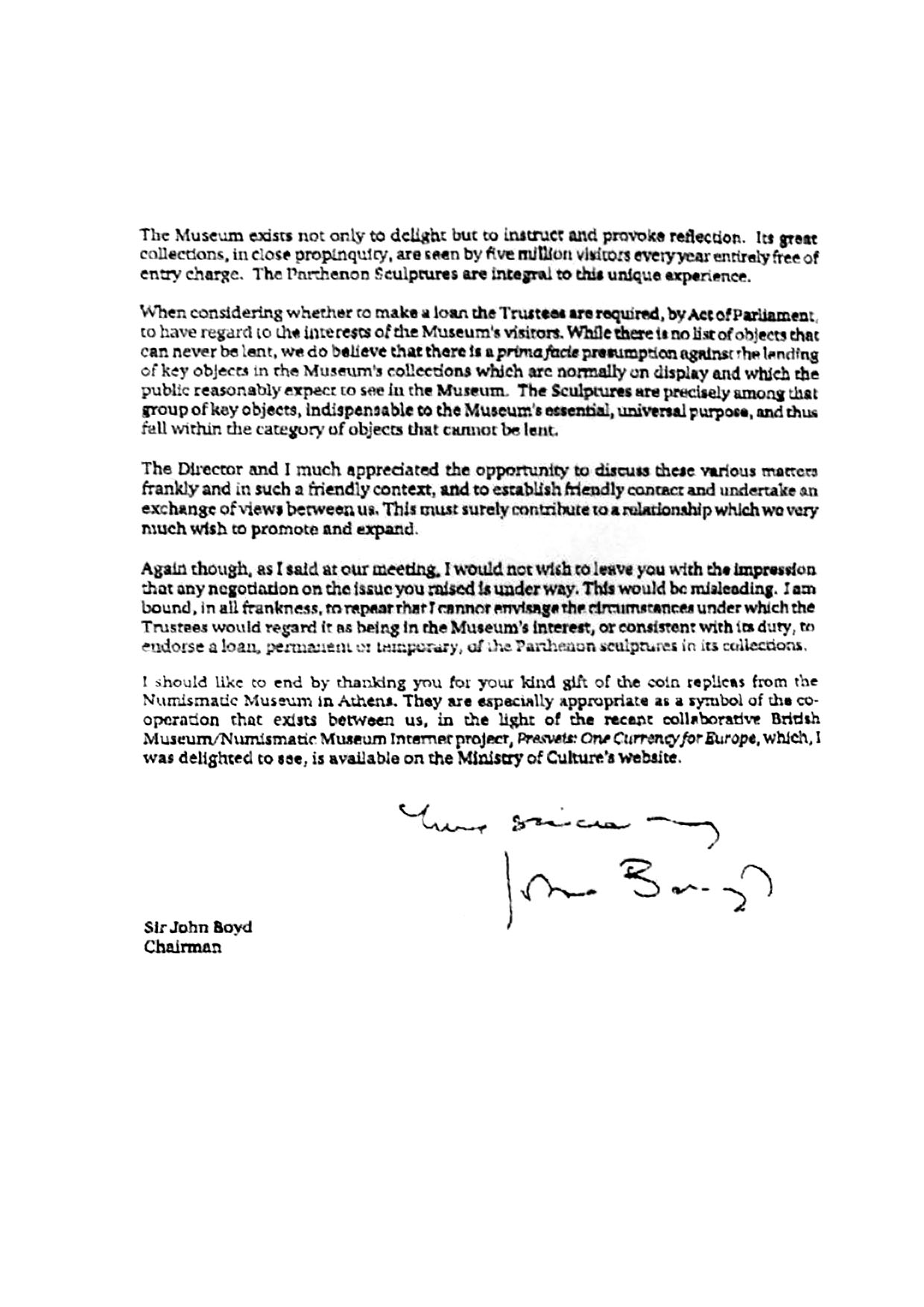Nobody can have missed the British Museum’s loan to the Hermitage of one of the Parthenon Sculptures.
The more I look into it though, the more questions it raises.
Museum loans do not normally happen under cover of darkness – yet this loan was only announced once the sculpture had already been packed up and left the museum – why was this the case.
Greece has for many years taken a policy of quiet diplomacy, but it appears that this pays absolutely no dividends in the game that the British Museum is currently playing.
I can understand that the British Museum might have wanted to make a loan to the Hermitage for their anniversary. Quite why this had to be the Parthenon Marbles is also unclear (although MacGregor argues otherwise).
There are positive points though. In the past, it has often been hinted that there are items in the British Museum’s collection that are too important, to integral to the collection to be loaned, but this latest move clearly shows that it possible for the Parthenon Marbles to leave the building, even if it is only one piece at a time.
The British Museum also states that ‘no talks had ever been held with the Greek government about a loan of part of the Parthenon marbles. “To date they have always made it clear that they would not return them. That rather puts the conversation on pause,” ‘
This last statement is clearly untrue, as there are letters on file relating to loan requests dating to 2002, between Sir John Boyd (then chair of the British Museum trustees) and Evangelos Venizelos (the Greek Minister of Culture). The Director of the British Museum was then, as it is now, Neil MacGregor.
Thank you to Dorothy King for alerting me to the presence of this letter. Click on the images to view them full size.


So, not only does the museum deny that a loan request was ever made despite having written:
“…it remains the opinion of the Board of Trustees that the Parthenon Sculptures in the collection of the British Museum can not be lent to the museum currently under development in Athens, whether in the manner you proposed or for a temporary period.”
But they previously hinted that despite any “no loan” list, the Parthenon Sculptures could not be loaned at all:
“…we do believe there is a prima facie assumption against the lending of key objects in the Museum’s collections which are normally on display and which the public reasonably expect to see in the Museum. The sculptures are precisely among that group of key objects indispensable to the Museum’s essential, universal purpose, and thus fall into the category of objects that can not be lent.”
Just in cases anyone was unclear after the above statement, the letter goes on to reiterate:
“I am bound in all frankness, to repeat that I cannot envisage the circumstances under which the Trustees would regard it as being in the Museum’s interest, or consistent with its duty, to endorse a loan, permanent or temporary, of the Parthenon Sculptures in its collections.”
The above statement make no comment regards who the applicant is – merely that the Parthenon Sculptures can not be loaned, not under any circumstances, not today, not tomorrow, not ever. Clearly different rules apply however, depending who is asking…
A copy of the complete text of the letter follows below:
The British Museum
14 November 2002
H.E. Mr Evangelos Venizelos
Minister of Culture
Hellenic Ministry of Culture
Your Excellency
The Parthenon Sculptures in the collections of the British Museum
It was a great pleasure to welcome you – though this was no, I know, your first visit – to the British Museum.
The Director and I are delighted to have held discussions with you and your colleagues on the Parthenon sculptures in the Museum’s collections and other matters. The exchanges suggested to me that there are many areas in which we can and should cooperate.
As I mentioned in our meeting, I am especially pleased to note that Dr Choremi, the Ephor of the Acropolis will speak at the Museum on Friday, 15 November, and that the British Museum is able to make generous loans to two exhibitions in Athens as part of the Cultural Olympiad in 2004. These are important examples of the fruitful cultural and academic relations that exist between us – and which can, I am sure, be developed further.
The Director and I naturally listened very carefully to what you had to say about the Parthenon Sculptures in our collections. I am grateful for the manner in which you approached the topic; grateful too for the understanding shown during the meeting for the Museum’s position. Nevertheless, it remains the opinion of the Board of Trustees that the Parthenon sculptures in the collections of the British Museum cannot be lent to the new museum currently under development in Athens, whether in the manner you proposed or for a temporary period.
Let me rehearse again the basis for our belief that the British Museum is the best possible place for these wonderful sculptures to be on display, as an essential chapter within the worldwide story of human cultural achievement. It is precisely this story which the Museum exists to tell through the rich and multi-faceted character of its worldwide collections. The ideas, aesthetics and skills of 5th century Greek civilisation are regarded here as elsewhere as central to this human experience. I am not sure that contemporary changes in political and economic attitudes, adduced at one point in our discussion, alter the point.
The Museum exists not only to delight but to instruct and provoke reflection. Its great collections, in close proximity, are seen by five million visitors every year entirely free of entry charge. The Parthenon Sculptures are integral to this unique experience.
When considering whether to make a loan the Trustees are required, by Act of Parliament, to have regard to the interest of the Museum’s visitors. While there is no list of objects that can never be lent, we do believe there is a prima facie assumption against the lending of key objects in the Museum’s collections which are normally on display and which the public reasonably expect to see in the Museum. The sculptures are precisely among that group of key objects indispensable to the Museum’s essential, universal purpose, and thus fall into the category of objects that can not be lent.
The Director and I much appreciated the opportunity to discuss these various matters frankly and in such a friendly context, and to establish friendly contact and undertake such an exchange of views between us. This must surely contribute to a relationship which we very much wish to promote and expand.
Again though, as I said in our meeting, I would not wish you to leave with the impression that any negotiation on the issue you raised is underway. This would be misleading. I am bound in all frankness, to repeat that I cannot envisage the circumstances under which the Trustees would regard it as being in the Museum’s interest, or consistent with its duty, to endorse a loan, permanent or temporary, of the Parthenon Sculptures in its collections.
I should like to end by thanking you for the kind gift of the coin replicas from the Numismatic Museum in Athens. They are especially appropriate ass a symbol of the co-operation that exists between us, in the light of the recent collaborative British Museum / Numismatic Museum Internet project, Presveis: One Currency for Europe, which, I was delighted to see, is available on the Ministry of Culture’s website.
Yours sincerely
John Boyd
Sir John Boyd
Chairman
This post originally appeared on Elginism Blog and is republished here as per the author's terms of use.